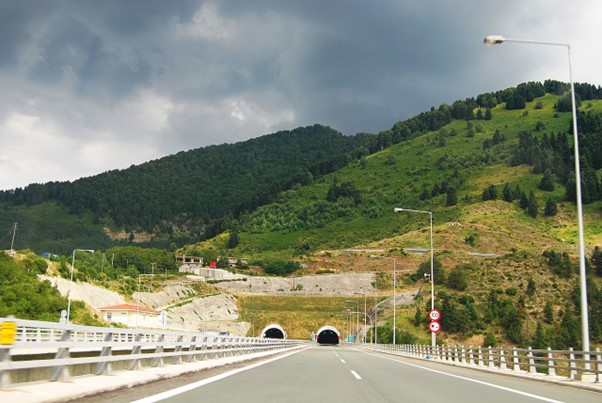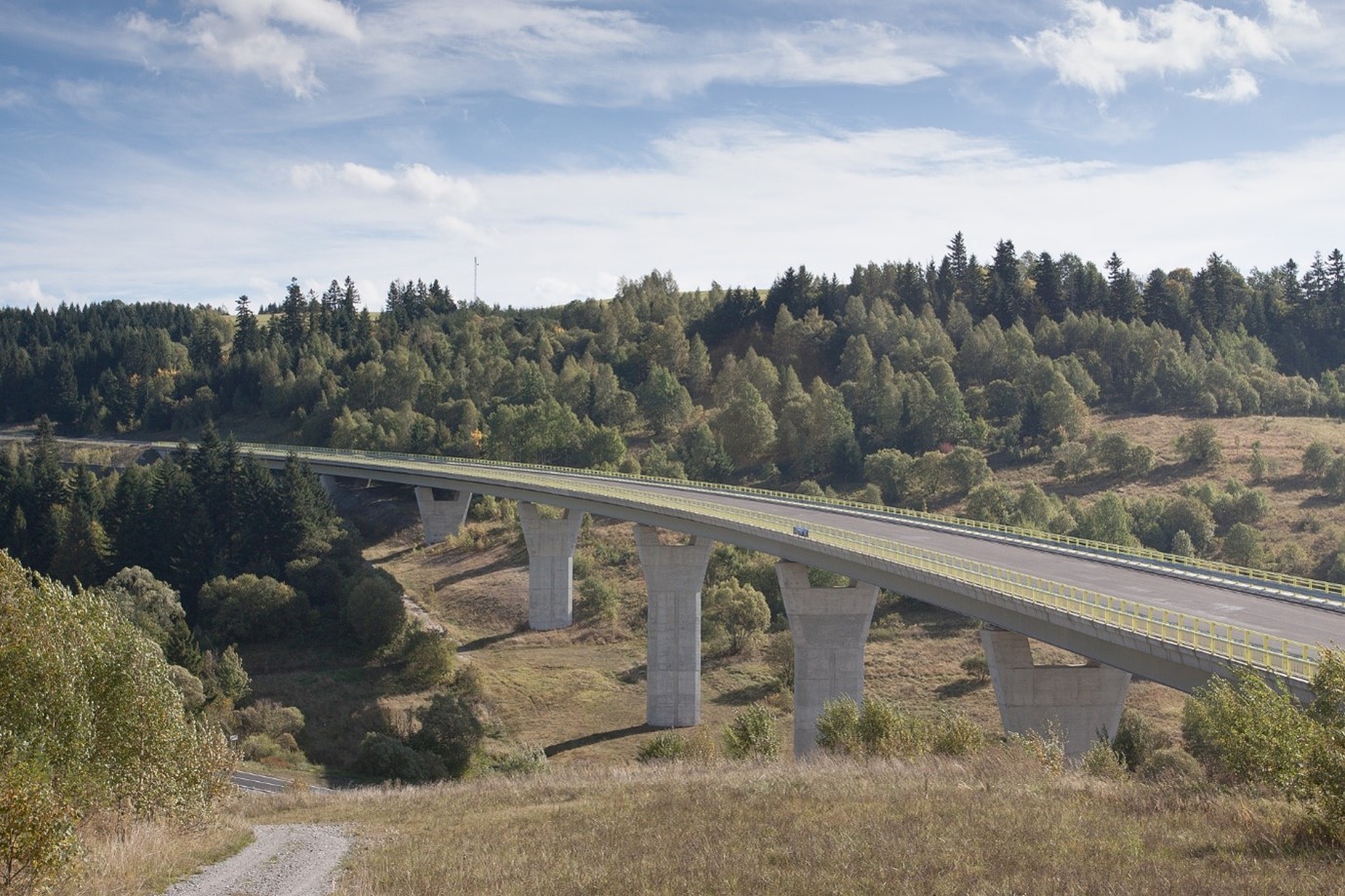SaveGREEN - Ecological connectivity: best practices in Europe
15-09-2022
At the heart of the SaveGREEN project is the goal of strengthening ecological connectivity. What projects already exist in Europe that have demonstrated the possibility of achieving this goal?
SaveGREEN represents the latest in a series of projects that have sought to preserve and improve connectivity of ecosystems in the Danube basin. Fragmentation of habitats has historically presented a barrier to usual movement of species and has inhibited ecological processes, undermining long-term resilience of populations. In other words, grey infrastructure, which can obstruct and interrupt normal ecological functioning, must become part of a wider green infrastructure, which enables and supports provision of ecosystem services. Happily, there are several examples in Europe of successful mitigation measures that have prevented transport links from dividing habitats and migration routes.

Image: an example of an ecoduct overpass, allowing animals to cross the road between these forest areas safely.
Source: Národná diaľničná spoločnosť.
Mobility of species throughout ecosystems, and space for animal and plant populations to move and redistribute, is an essential part of normal ecological function. Particularly important in the Danube region is the movement of carnivore populations such as bears, wolves, and lynx, whose large territories and relatively small population numbers make them especially vulnerable to habitat fragmentation. To avoid inbreeding and loss of genetic diversity, protecting the vital ecological functions provided by these large predators in the long-term, it is necessary to ensure that infrastructure such as railways, roads, and new urban developments do not prevent their movement.
There is a great example in the Greek region of Western Macedonia, the 36km West Egnatia – Panagia-Grevena section of the Egnatia Odos Motorway, completed between 2005-2010, faced opposition by environmental NGOs in its initial planning stage. The new motorway section, which completed a high-speed road connection from Turkey to Central Europe, crossed a crucial area of bear habitat, threatening to split populations and prevent their movement, as well as posing a human safety risk of high-speed collisions with the animals. Indeed, multiple significant collisions occurred on the route in 2008 and 2009; after this, investment was made in refitting bridges and underpasses to encourage animal movement (including by planting vegetation, otherwise greening the structures), and a dedicated ecoduct was designed and constructed for a 2km stretch which had no crossing infrastructure otherwise. With the remaining stretches of the route fenced off robustly to prevent inadvertent bear crossings, collisions were reduced to zero, and the conditions for safe and effective bear crossings were established. In this case, benefits for human safety and conservation goals generated by the establishment of ecological connectivity were highlighted. As such, it is worth noting that green infrastructure planning is not an economic compromise for conservation, but provides crucial socioeconomic and environmental outcomes across the board.
 Image: an underpass beneath the Pindos mountain range, on the Egnatia Odos motorway, Greece. Underpasses like this one are part of the network that allowed for ecological connectivity in places, but one can imagine the difficulty in crossing sections without these structures. Source: Annatsach.
Image: an underpass beneath the Pindos mountain range, on the Egnatia Odos motorway, Greece. Underpasses like this one are part of the network that allowed for ecological connectivity in places, but one can imagine the difficulty in crossing sections without these structures. Source: Annatsach.
Beyond specific infrastructure projects, there has also been progress towards implementation of green infrastructure into planning at state level in Europe. A project led by the Hungarian Ministry of Innovation and Technology from 2022 aims to distribute expertise for the strengthening of nature-based solutions and GI in municipal spatial planning strategy. The LIFE-MICACC (Municipalities as Integrators and Coordinators in Adaptation to Climate Change) project targets mainstreaming of knowledge frameworks for planners across Hungary to incorporate ecosystem services into infrastructural planning, and capacity-building for Hungarian municipalities to apply for EU grants and other funding opportunities to deliver on green infrastructure plans. The project has five pilot sites around the country, mostly centred around wetland restoration as a means to protect municipalities from flash flooding and restore groundwater levels for resilience against drought.
In Germany, meanwhile, the government has moved to enshrine a system of compensation in national legislature to enable restrictions on land use in particular areas, providing the basis for state-led protection of ecological connectivity at a macro scale. This system has seen practical results in the Schleswig-Holstein region, where a coherent system of ecological corridors was created by compensating industry and agricultural stakeholders for restrictions on land use. These developments by European states in recent years are indicative of a broader trend toward green infrastructure at the highest levels of policymaking, painting a hopeful picture for the future of integrated planning.
 Image: a viaduct road design enabling sustained ecological connectivity beneath, Czech Republic. Source: SaveGREEN.
Image: a viaduct road design enabling sustained ecological connectivity beneath, Czech Republic. Source: SaveGREEN.
This is not to naively suggest that there are not still obstacles to the wider implementation of green infrastructure as a development framework, however. In the case of the first example mentioned, the section of the Egnatia-Odos motorway, the original design and implementation process was conducted with minimal consideration of implications for habitat impacts and connectivity, and were only redressed after significant pressure from universities and environmental NGOs. While in this case the process of retrofitting crossings to enable traversal by large animals was possible, in many cases of non-integrated or grey infrastructure planning, the problems for ecological connectivity can only be fixed by total redesign, at enormous cost. The Zvolen section of the Slovak Expressway R2, for instance, was built without rigorous ecological consideration and has created a serious obstacle to the movement and genetic mixing of south Slovak and Hungarian large predators. The design of the road along an embankment is such that retrospective mitigation measures, for instance construction of green bridges or ecoducts, have proved near impossible, fragmenting habitat ranges for several miles. While quite such an acute obstacle to retrospective measures to improve ecological connectivity is rare, in almost any case, it is more cost-efficient and ecologically effective to integrate the principles of green infrastructure from the very beginning of new project designs. It is with this recognition that the SaveGREEN project is working and building upon some of the best practices outlined here. The connectivity of ecosystems is essential to the wider functioning of green infrastructure, a set of invaluable ecosystem services which maintain the health and resilience of society and natural systems. Contained in the examples explored here has been a brief insight into the combined social, ecological, and economic benefits of improving green infrastructure, as well as the dangers of ecologically-blind grey infrastructure planning. By working to place green infrastructure at the centre of planning strategy, SaveGREEN works toward development with holistic benefits which work alongside rather than against natural processes.
Concluding the GREEN project trilogy, the closure of SaveGREEN this year, will mark 2,5 years of this final project mainstreaming awareness of the importance of integrated planning amongst experts and stakeholders in the Danube region. Follow the rest of this article series for more details about best practices informing action here in the region, as well as a review of the progress SaveGREEN has achieved.
Author:
Elliott Cocker, CEEweb for Biodiversity
